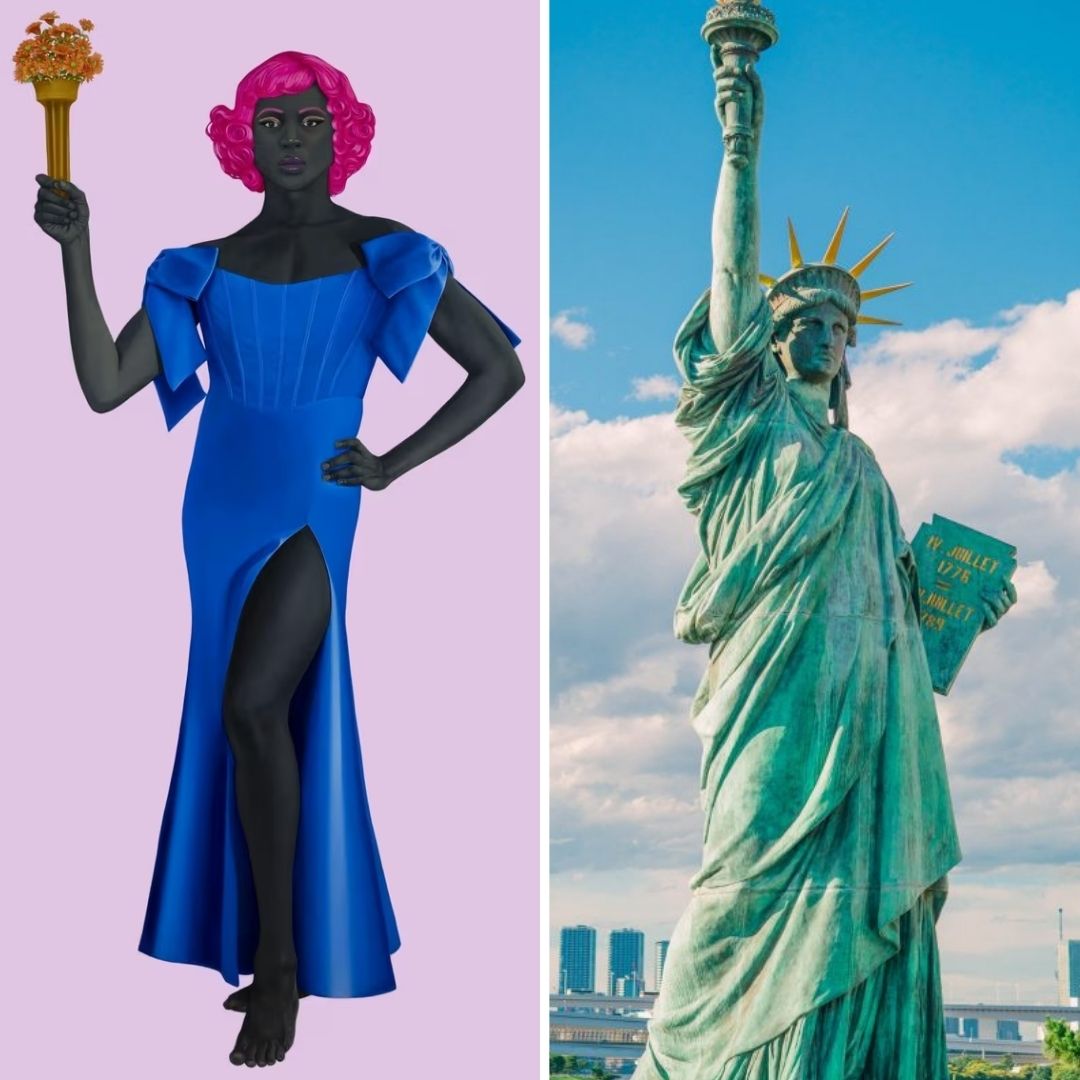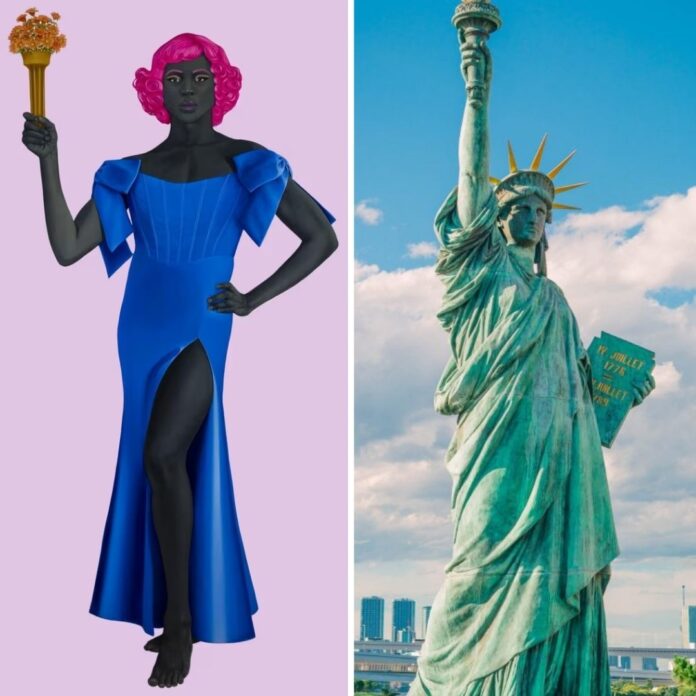STATUE OF LIBERTY REIMAGINED AS ‘MODERN AMERICA’ STIRS FURY!
A bold artwork transforms the iconic Statue of Liberty into a symbol of today’s America, but not everyone’s cheering. Is this a powerful statement or a step too far? 🗽🔥

A striking portrait by artist Amy Sherald, titled Trans Forming Liberty, appears on the August 11 cover of The New Yorker, punctuating a cultural flashpoint that has drawn national attention and sparked debate over censorship, representation, and the politics of visibility in American art institutions.
The painting—depicting trans-femme actor and model Arewà Basit as a reimagined Statue of Liberty—is at the center of a dispute that led Sherald to withdraw her major mid-career retrospective, American Sublime, from the Smithsonian’s National Portrait Gallery, just weeks before it was scheduled to open.
Sherald’s decision followed internal discussions at the Smithsonian about whether Trans Forming Liberty should be removed from the Washington installation or “contextualized” through a companion video, reportedly including critical and anti-trans commentary. Sherald, who described the suggestion as a dilution of the painting’s message, said the proposed framing would “diminish the autonomy” of the subject and artwork.
“I created this portrait to honor trans visibility and reframe who is allowed to represent liberty,” Sherald said in a public statement. “What is liberty, if not the right to be seen?”
A Work that Redefines Liberty
Trans Forming Liberty, completed in 2024, presents Basit standing in front of a muted sky, draped in the familiar green of the Statue of Liberty’s robe. But the expression is human, serene, and defiant—devoid of allegory, yet powerfully symbolic. The painting blends Sherald’s signature grayscale technique with vibrant garments and an arresting stillness, evoking the formal dignity of historical portraiture while expanding its modern meaning.
The piece challenges entrenched ideas of American identity by placing a Black, transgender figure at the center of one of the nation’s most sacred symbols. It asks: Who holds the torch now?
‘Trans Forming Liberty’ challenges who we allow to embody our national symbols—and who we erase,” Sherald said. “It demands a fuller vision of freedom, one that includes the dignity of all bodies, all identities. Liberty isn’t fixed. She transforms, and so must we. This portrait is a confrontation with that truth.
Institutional Tensions
Sherald’s retrospective debuted at the San Francisco Museum of Modern Art in late 2024 and is currently concluding its run at the Whitney Museum in New York. The exhibition was to be her first solo survey at the Smithsonian’s National Portrait Gallery—making her the first contemporary Black artist to receive such an honor at the institution.
But tensions arose as the Smithsonian weighed political and public reactions to the painting. Sources close to the matter said museum leaders, under pressure from recent federal directives targeting “ideological content,” floated the idea of replacing or contextualizing the work via video rather than including it in the exhibit.
Sherald rejected the compromise. “To ‘contextualize’ this work out of fear is to surrender the very ideals it represents,” she wrote in a letter to Smithsonian Secretary Lonnie G. Bunch III.
The Smithsonian responded that the decision was not final and said it regretted the cancellation. In a statement, the museum reaffirmed its commitment to diversity while expressing disappointment over the outcome.
A Political Climate Shift
Sherald’s decision comes amid a broader shift in the cultural landscape under the second Trump administration. In March 2025, President Trump signed an executive order titled “Restoring Sanity to American Heritage,” which calls on federally funded institutions to avoid “politically divisive content.” The order has led to increased scrutiny of museum exhibitions, diversity initiatives, and curatorial choices.
The National Portrait Gallery’s director, Kim Sajet, resigned in June, citing mounting institutional pressures and a climate that she described as “increasingly hostile to curatorial independence.”
Sherald’s protest is seen by many in the art world as a principled stand—both for the right to artistic expression and for trans representation at a time of heightened political polarization.
Symbolism on a National Stage
While Trans Forming Liberty may not be shown at the Smithsonian, it has found another national stage: the cover of The New Yorker. The magazine’s editors called the painting “a defining portrait of our times” and praised Sherald for using portraiture to “recast national identity in more inclusive terms.”
By placing the image on newsstands and coffee tables across the country, The New Yorker has elevated Sherald’s painting into a new realm of public discourse—ensuring that the debate it sparked continues far beyond gallery walls.
